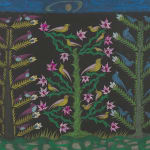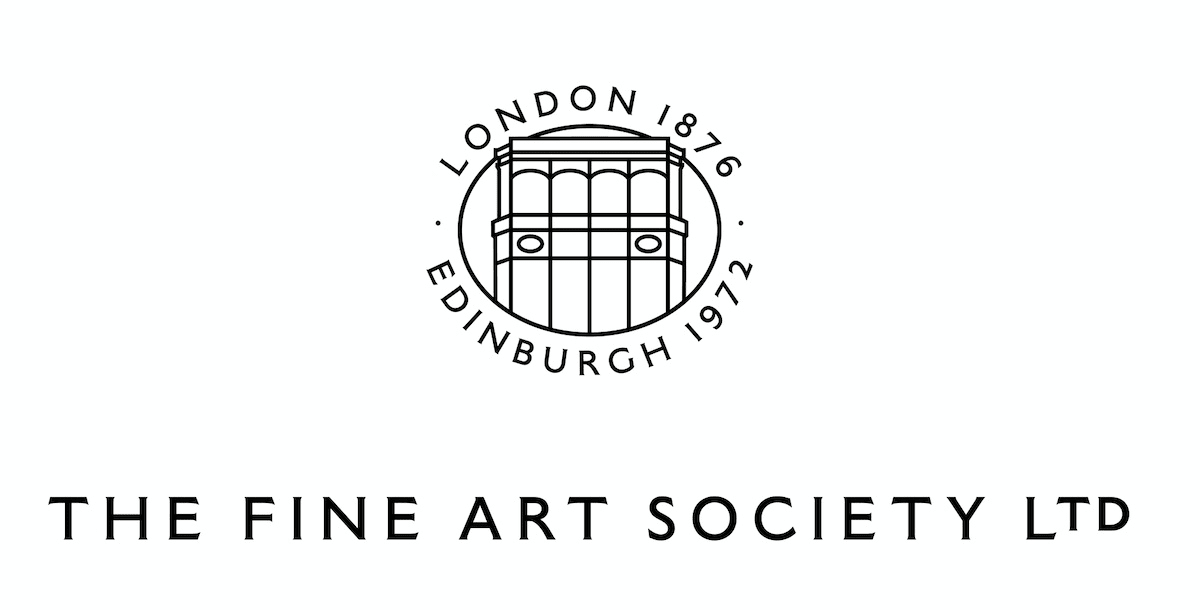

Scottie Wilson
Untitled, 1950s
signed
pencil, pen and coloured ink on paper
20 x 25 inches
Scottie Wilson 1891-1972 (usually referred to as 'Scottie') was born into poverty in Glasgow. After serving during World War I, he emigrated to Canada. There he opened a second-hand shop...
Scottie Wilson 1891-1972 (usually referred to as 'Scottie') was born into poverty in Glasgow. After serving during World War I, he emigrated to Canada. There he opened a second-hand shop which sold, among other things, fountain pens. In 1944 he started using these as a tool to doodle on cardboard, an activity which occupied more and more of his time. Eventually his work was included in group gallery shows, but Scottie didn't want to sell. He tried organising touring shows, charging modest entry fees.
Despite growing recognition in Canada, in 1945 Scottie returned to the UK and settled in London, where he continued to organise his paying exhibitions. Though wary of the art trade, from time to time he was induced to show in a commercial art gallery. Gimpel Fils held its first Scottie Wilson exhibition in 1949. On the opening evening, Scottie turned up late for his vernissage, having repaired to a nearby pub in South Molton Street where, portfolio of drawings in hand, he offered the customers a chance to buy the work of 'an artist' for a fraction of what a 'posh' Mayfair gallery was charging further up the street.
In the 1950's, Scottie was invited to Paris by the celebrated French artist Jean Dubuffet. Dubuffet was an admirer of Scottie, as was Picasso and both artists collected his work. Dubuffet's significant collection of Art Brut, his own term, was donated to Lausanne and is now in a public museum.
In the 1960's, Royal Worcester commissioned a series of dinnerware from Scottie and these proved popular. Although not an exclusive concern of Outsider Art, there is a recurring moral theme to be found within this movement and Scottie's own contribution is his manichean view of the world, where his 'greedies' are juxtaposed with positive symbols of goodness, usually in the form of nature.
cf. https://www.tate.org.uk/art/artists/scottie-wilson-2152
Despite growing recognition in Canada, in 1945 Scottie returned to the UK and settled in London, where he continued to organise his paying exhibitions. Though wary of the art trade, from time to time he was induced to show in a commercial art gallery. Gimpel Fils held its first Scottie Wilson exhibition in 1949. On the opening evening, Scottie turned up late for his vernissage, having repaired to a nearby pub in South Molton Street where, portfolio of drawings in hand, he offered the customers a chance to buy the work of 'an artist' for a fraction of what a 'posh' Mayfair gallery was charging further up the street.
In the 1950's, Scottie was invited to Paris by the celebrated French artist Jean Dubuffet. Dubuffet was an admirer of Scottie, as was Picasso and both artists collected his work. Dubuffet's significant collection of Art Brut, his own term, was donated to Lausanne and is now in a public museum.
In the 1960's, Royal Worcester commissioned a series of dinnerware from Scottie and these proved popular. Although not an exclusive concern of Outsider Art, there is a recurring moral theme to be found within this movement and Scottie's own contribution is his manichean view of the world, where his 'greedies' are juxtaposed with positive symbols of goodness, usually in the form of nature.
cf. https://www.tate.org.uk/art/artists/scottie-wilson-2152
Provenance
Gimpel Fils, London, no.287533
of
33
Join our mailing list
* denotes required fields
We will process the personal data you have supplied to communicate with you in accordance with our Privacy Policy. You can unsubscribe or change your preferences at any time by clicking the link in our emails.


